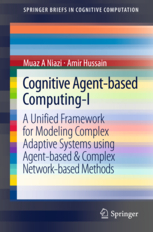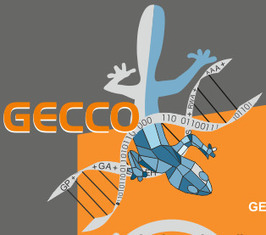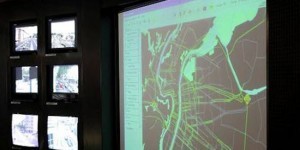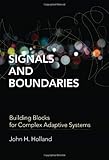 Your new post is loading...
 Your new post is loading...
The disruptions to everything from gasoline supplies to the deliveries of merchandise for the holiday shopping season caused by Hurricane Sandy have demonstrated that our ability to forecast weather events has outpaced our ability to forecast supply-chain disasters. If we can forecast a superstorm, we should be able to predict events that could disrupt supply chains and mitigate their impact. To do that, all the parties that have a stake in disruptions — members of supply chains, insurers, governments, and markets — should proactively develop a responsiveness system that would be able to predict different types and levels of supply-chain disasters. Depending on the type and level, different response plans would get activated. Click on the image or title to learn more.
Complex Systems are made up of numerous interacting sub-components. Non-linear interactions of these components or agents give rise to emergent behavior observable at the global scale. Agent-based modeling
and simulation is a proven paradigm which has previously been used for effective computational modeling of complex systems in various domains. Because of its popular use across different scientific domains, research in agent-based modeling has primarily been
vertical in nature.
The goal of this book is to provide a single hands-on guide to developing cognitive agent-based models for the exploration of emergence across various types of complex systems. We present practical ideas and
examples for researchers and practitioners for the building of agent-based models using a horizontal approach - applications are demonstrated in a number of exciting domains as diverse as wireless sensors networks, peer-to-peer networks, complex social systems,
research networks and epidemiological HIV. Cognitive Agent-based Computing-I A Unified Framework for Modeling Complex Adaptive Systems using Agent-based & Complex Network-based Methods
Series: SpringerBriefs in Cognitive Computation
Niazi, Muaz A, Hussain, Amir
Via Complexity Digest
Good interview at the Institutional Investor with J. Doyne Farmer, an external professor at the Santa Fe Institute, a private, nonprofit research organization, but was originally trained as a physicist. In the 1980s he worked at the Los Alamos National Laboratory, home of the Manhattan Project, where scientific luminaries like J. Robert Oppenheimer and Richard Feynman once plied their trade. At Los Alamos Farmer founded the Complex Systems Group in the theoretical division. In 1991, he co-founded the Prediction Company, a quantitative trading firm which was purchased by Swiss banking giant UBS in 2005.The Santa Fe academic and Los Alamos alum says the insights of classical and behavioral finance can be much refined by using computers to simulate how real people act — and interact — when making economic decisions. Click on the title to learn more.
Genetic and Evolutionary Computation Conference Amsterdam, The Netherlands 2013/07/6-10
Via Complexity Digest
Good Computerworld article on predictive analytics project adoption. Emphasizing that it does not require a big budget, but does require business understanding and sponsors to agree that this is a priority for them. Includes a good checklist that is well worth considering for any project. Thanks to Franz Dill for the link. Clikc on image or tittle to learn more...
famous paper by Dr. Richard Cook of the University of Chicago - “How Complex Systems Fail”. It offers a cross-discipline perspective on complex systems. Among other things, Dr. Cook emphasizes the following: More robust system performance requires appreciation and experience with failure. Complex systems run as broken systems (with many latent failures within, but functional because it contains redundancies). Failures in complex systems require the combination of multiple factors (thus, looking for a single ‘root cause’ is fundamentally wrong.
Change/interventions introduce complexity and new forms of failure. When new technologies are used to eliminate well understood system failures or to gain high precision performance they often introduce new pathways to large scale, catastrophic failures, which potentially can have even greater impact than those eliminated by the new system.
Full artile is worth reading
Each year, crowd disasters happen in different areas of the world. How and why do such disasters happen? Are the fatalities caused by relentless behavior of people or a psychological state of panic that makes the crowd 'go mad'? Or are they a tragic consequence of a breakdown of coordination? These and other questions are addressed, based on a qualitative analysis of publicly available videos and materials, which document the planning and organization of the Love Parade in Duisburg, Germany, and the crowd disaster on July 24, 2010. Our analysis reveals a number of misunderstandings that have widely spread. Crowd Disasters as Systemic Failures: Analysis of the Love Parade Disaster
Helbing D, Mukerji P
EPJ Data Science 2012, 1:7 (25 June 2012) http://dx.doi.org/10.1140/epjds7
Via Complexity Digest
A good review of Open House: Smarter cities, smarter thinking meeting on the 28 June, 2012 . This year’s conference centred on the cohesive development of our cities. Delegates from BDP, Hawkins Brown, Nicholas Hare Architects, Pick Everard and Foster + Partners were among those present at the second day of the Open House Worldwide Conference 2012 hosted by CBRE in London. Worth reading. Click on image or headline to learn more.
Games and games technology often inspire and sometimes lead the simulation industry. Over the years Sim City has been instrumental in many people learning about simulations, urban planning and land use in and outside of a class room. The next generation of Sim City is likely to do that and set expectations on what City Simulations should look like. :-) Great article at Gamasutra on the design and aesthetic of the new version and how it relates to the underpinning simulation. Learn more...
The PyCX Project aims to develop an online repository of simple, crude, yet easy-to-understand Python sample codes for dynamic complex systems simulations, including iterative maps, cellular automata, dynamical networks and agent-based models. Learn more...
Via Complexity Digest, David Rodrigues, Frédéric Amblard
Proof-of-principle experiment shows how humanoid robots can co-operate on a large scale by copying the behavior of social insects and bacterial colonies. - learn more.
Via The Robot Launch Pad
Totally awesome blog by James Chesire and co at UCL CASA on spatial analysis and geo data visualization. Worth reading and learning from. Learn more...
|
Get into a cab and it's safe to assume the driver knows the ins, outs, shortcuts and potential traffic tie-ups between you and your destination. That kind of knowledge comes from years of experience, and IBM is taking a similar tact that blends real-time data and historical information into a new breed of traffic prediction. IBM is testing the new traffic-management technology in a pilot program in Lyon, France, that’s designed to provide the city’s transportation engineers with “real-time decision support” so they can proactively reduce congestion. Called Decision Support System Optimizer (DSSO), the technology uses IBM’s Data Expansion Algorithm to combine old and new data to predict future traffic flow. Over time the system “learns” from successful outcomes to fine-tune future recommendations. Click on the title or image to learn more.
Recent debates about the crisis vulnerability of international financial networks indicate that in economics complexity is still a widely misunderstood concept. Great post on comparing financial trading with the behaviour of crowds. Worth reading - click on image or title for more info.
Uterine cancer is the fourth most common cancer among women, and the most common gynecological cancer. Researchers at the University of Iowa are using high-performance computing (HPC) to investigate how a tumor develops in normal uterine epithelium. The majority of cancer research presumes that every cell in a tumor is driven by the same genetic alterations and follows same pathway to malignancy. Dr. Donghai Dai, associate professor of obstetrics and gynecology in the Carver College of Medicine, doesn’t think that’s the case. He believes the billions of cells that make up a tumor may each have their unique mutations that cause them to deviate from normal cell behavior. So, Dai and his team are taking a single-cell approach to studying the development of tumors. With complex mathematical models and the Helium computing cluster, administered by Information Technology Services, they can run simulations on millions of representative uterine cells each day. The researchers determine the fate of the cells through incorporation of the combined effect of numerous random mutations and varying hormonal stimulations. Click on the image or title to learn more.
Thanks to AntonJ and CXBooks for the heads up on this. For me few books, papers and ideas I have ever read have been as long term rewarding as those from John H. Holland. It could be simply that i fell for the ideas underpinning genetic algorithms(GA) when a young student, or that he generously took time to explain some finer points on applying GAs to certain classes of problems to me over the phone when I phoned his office for a copy of a paper when a young researcher. More than likely however it is the fact that that Holland and his cohorts have invented a big chunk of computer science tools and frameworks for thinking about complex systems. Either way a John Holland book is something I look forward to. His new one - Signals and Boundaries is now available. In Signals and Boundaries, Holland argues that understanding the origin of the intricate signal/border hierarchies of complex adaptive systems (cas) such as ecosystems, governments, biological cells, and markets is the key to answering such questions. He develops an overarching framework for comparing and steering cas through the mechanisms that generate their signal/boundary hierarchies. Holland lays out a path for developing the framework that emphasizes agents, niches, theory, and mathematical models. He discusses, among other topics, theory construction; signal-processing agents; networks as representations of signal/boundary interaction; adaptation; recombination and reproduction; the use of tagged urn models (adapted from elementary probability theory) to represent boundary hierarchies; finitely generated systems as a way to tie the models examined into a single framework; the framework itself, illustrated by a simple finitely generated version of the development of a multi-celled organism; and Markov processes. Totally worth reading, chewing on and thinking about for a long time. Click on image or title to learn more.
Awesome summary from Complexity Digest and CxBooks - happily rescooped here. Fish travel in schools, birds migrate in flocks, honeybees swarm, and ants build trails. How and why do these collective behaviors occur? Exploring how coordinated group patterns emerge from individual interactions, Collective Animal Behavior reveals why animals produce group behaviors and examines their evolution across a range of species. Providing a synthesis of mathematical modeling, theoretical biology, and experimental work, David Sumpter investigates how animals move and arrive together, how they transfer information, how they make decisions and synchronize their activities, and how they build collective structures. Sumpter constructs a unified appreciation of how different group-living species coordinate their behaviors and why natural selection has produced these groups. For the first time, the book combines traditional approaches to behavioral ecology with ideas about self-organization and complex systems from physics and mathematics. Sumpter offers a guide for working with key models in this area along with case studies of their application, and he shows how ideas about animal behavior can be applied to understanding human social behavior. Containing a wealth of accessible examples as well as qualitative and quantitative features, Collective Animal Behavior will interest behavioral ecologists and all scientists studying complex systems.
Via Complexity Digest
SINGAPORE - The Housing and Development Board will soon be able to make better and more informed decisions on sustainable urban planning initiatives - such as which public housing blocks should have green roofs or solar panels. A Memorandum of Understanding to test-bed a new complex systems modeling tool was signed between the HDB, Electricite de France and VEOLIA Environement Recherche et Innovation yesterday at the World Cities Summit. The complex Systems Model simulates the built environment of a city and its impact on resource use, environment, people and costs. Click on the headline to learn more...
Unfortunately you will need an account to access this. Excellent paper from Arizona state and Center of Complexity Research at Beijing Normal University. The research provides a general method to detect hidden nodes in complex networks, using only time series from nodes that are accessible to external observation. This is important for a bunch of research and analysis areas that are looking at complex systems with time series data and trying to determine hidden actors/processes or patterns in black boxed systems/subsystems with network connections. The detailed method is based on compressive sensing and encompasses continuous- and discrete-time and the evolutionary-game type of dynamical systems as well. The practical demonstration of the technique is done using analysis of a social network. Worth taking a look at. To learn more click on title of article.
Society is complicated. But this book argues that this does not place it beyond the reach of a science that can help to explain and perhaps even to predict social behaviour. As a system made up of many interacting agents – people, groups, institutions and governments, as well as physical and technological structures such as roads and computer networks – society can be regarded as a complex system. In recent years, scientists have made great progress in understanding how such complex systems operate, ranging from animal populations to earthquakes and weather. These systems show behaviours that cannot be predicted or intuited by focusing on the individual components, but which emerge spontaneously as a consequence of their interactions: they are said to be ‘self-organized’. Attempts to direct or manage such emergent properties generally reveal that ‘top-down’ approaches, which try to dictate a particular outcome, are ineffectual, and that what is needed instead is a ‘bottom-up’ approach that aims to guide self-organization towards desirable states. This book shows how some of these ideas from the science of complexity can be applied to the study and management of social phenomena, including traffic flow, economic markets, opinion formation and the growth and structure of cities.
Via Complexity Digest
Dr. Farmer said classical economics had failed miserably to provide the right data for us to understand ourselves. He and others have begun to develop so-called agent-based models of the economy, asking in effect how the seemingly random behavior of individual ants can give rise to anthills with all their pulsing purpose, form and intelligence.
The PaxSims blog is devoted to the development and effective use of simulation-based learning concerning issues of conflict, peacebuilding, and development in fragile and conflict-affected states, as well as to the policy of application of gaming and simulation techniques. If you are using agent based models or complex systems related simulations for policy modelling or development then the PAXsims blog should be on your essential reading list. Learn more...
Research at Carlos III University in Madrid is developing an algorithm, based on ants' behavior when they are searching for food, which accelerates the search for relationships among elements that are present in social networks. One of the main technical questions in the field of social networks, whose use is becoming more and more generalized, consists in locating the chain of reference that leads from one person to another, from one node to another. The greatest challenges that are presented in this area is the enormous size of these networks and the fact that the response must be rapid, given that the final user expects results in the shortest time possible. In order to find a solution to this problem, these researchers from UC3M have developed an algorithm SoSACO, which accelerates the search for routes between two nodes that belong to a graph that represents a social network. The way SoSACO works was inspired by behavior that has been perfected over thousands of years by one of the most disciplined insects on the planet when they search for food. In general, the algorithms used by colonies of ants imitate how they are capable of finding the path between the anthill and the source of food by secreting and following a chemical trail, called a pheromone, which is deposited on the ground. "In this study – the authors explain – other scented trails are also included so that the ants can follow both the pheromone as well as the scent of the food, which allows them to find the food source much more quickly". The main results of this research, which was carried out by Jessica Rivero in UC3M's Laboratorio de Bases de Datos Avanzadas (The Advanced Data Bases Laboratory - LABDA) as part of her doctoral thesis, are summarized in a scientific article published in the journal Applied Intelligence. "The early results show that the application of this algorithm to real social networks obtains an optimal response in a very short time (tens of milliseconds)", Jessica Rivero states.
Via Ashish Umre, Eugene Ch'ng
Doyne Farmer, Professor at Santa Fe Institute speaking at the breakout panel entitled "Taking Stock of Complexity Economics: Which Problems Does It Illuminate?" at the Institute for New Economic Thinking's (INET) Paradigm Lost Conference in Berlin. April 14, 2012. All the presentations are available and very worth watching. Learn more..
|
 Your new post is loading...
Your new post is loading...
 Your new post is loading...
Your new post is loading...




























